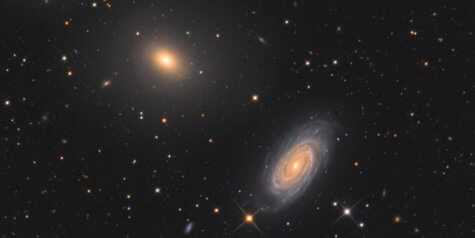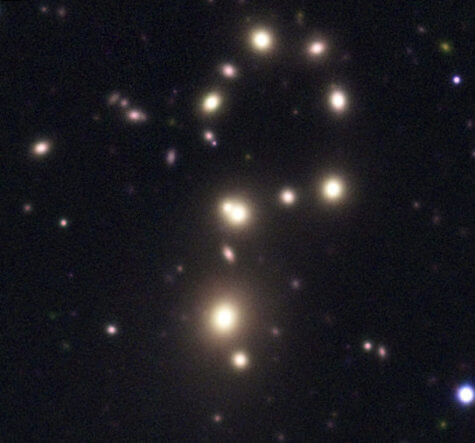DURHAM, United Kingdom — Astronomers believe they are close to discovering the secrets of the mysterious substance scientists think makes up much of the universe — dark matter.
Currently, researchers say these particles make up 80 percent of the universe. Understanding the nature of space may eventually hold the key to interstellar travel.
The international team used a complicated technique called “gravitational lensing” during their study. They looked at images of countless galaxies to see how the light is distorted by those in the foreground. The highly magnified bending was stronger than should be produced according to Albert Einstein’s famous theory of general relativity.

“When we discovered that the additional amount of gravity exerted by the two types of galaxies differed significantly, we took this at first as a strong hint pointing to the existence of dark matter as a particle,” says study leader Dr. Margot Brouwer from the University of Groningen in a release.
Using conventional chemical rockets, a trip even to the nearest star would take so long it may not be worth it to some. NASA’s Parker Solar Probe, due for launch in December 2024, will be the fastest spacecraft to date – reaching speeds nearing 430,000 mph.
Even at that rate it would take nearly 7,000 years to traverse the 25.67 trillion miles to our nearest stellar neighbor, Proxima Centauri. Humans will need something new to get there faster, and that’s where dark matter could possibly come in.
What exactly is dark matter made of?
Scientists think dark matter is made up of WIMPS (weakly interacting massive particles). They emit no light or energy, making them invisible to the naked eye and even machines.
Known as neutralinos, they also have no charge and act as their own anti-particles. The abundance means they’d be free for the taking. A ship would need very little onboard fuel. It could be collected while in transit and made to interact with itself.
Dark matter is different from anything found in people, planets, and stars. It’s even been suggested it results from deviations in the laws of gravity. However, the latest findings in Astronomy & Astrophysics point to the existence of a large amount of particles.

They extend much further into the outskirts of galaxies than previous work suggests. The region contains very little ordinary matter, yet dark matter is still apparently widespread.
“The images of distant galaxies are distorted by the gravity of intervening galaxies bending the light rays on their way to us,” explains co-author Dr. Kyle Oman from the Institute for Computational Cosmology at Durham University.
“This gravitational lensing is stronger than Einstein’s theory of General Relativity predicts would be caused by the visible stars and gas in the intervening galaxies. This points either to the presence of a lot of additional, invisible matter, in which case we are seeing another manifestation of the dark matter phenomenon, or we need to modify or replace General Relativity as a theory of gravity.”
Scanning the universe for clues
Researchers measured the expected and actual gravity from distortions in images of galaxies behind 259,000 others. Those images were taken by the KiDS (Kilo-Degree Survey) at the European Southern Observatory (ESO) in Chile’s Atacama Desert. It enabled the researchers to calculate the average amount of extra gravity exerted by each foreground galaxy.
More came from older, red elliptical galaxies than younger, blue spiral galaxies. The team then compared the results with computer simulations of the universe where astronomers assume dark matter particles exist. Massive objects like galaxies bend the spacetime around them, making light travel in a different path. The theory was first proposed by Einstein.
SWNS writer Mark Waghorn contributed to this report.
